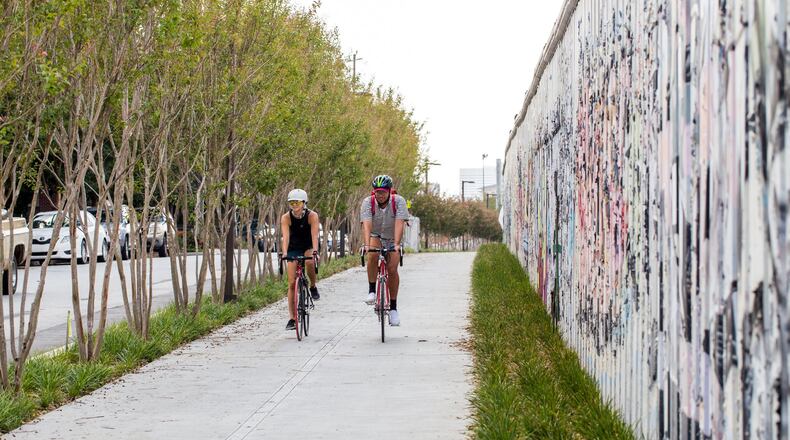Doretha Walker doesn’t want to leave Sandy Springs after more than 20 years there, but she feels housing prices have pushed her out.
Walker said her rent has gone from $700 a month to $1,100 in about five years, with management adding only appliances. So she’s looking.
“It priced itself out of my range. I got to eat,” said the 51-year-old who works at the Marshalls near Perimeter Mall.
The cost of housing was what brought Walker and roughly 150 other people to Sandy Springs United Methodist Church on Thursday night. They discussed local affordable housing issues considering lessons learned from the Atlanta Beltline, the 22-mile trail loop has drastically changed and gentrified many of the 45 Atlanta neighborhoods it runs through.
READ | Welcome to Sandy Springs: What's your license plate? City gets 99 cams
The event organized by Sandy Springs Together featured Beltline leaders because the group thinks Sandy Springs has something to learn from the Beltline. Sandy Springs was the first north Fulton city that forever changed metro Atlanta’s map with the cityhood movement when it incorporated in 2006.
Melanie Counchman, who started Sandy Springs Together with her husband, said the perception is that Sandy Springs only has problems afflicting the affluent, but people don’t understand the city’s deep issues.
“We are not this sleepy little suburb,” she said. “Being a new city, we don’t have a lot of infrastructure … (and) we have people living in their cars like the inner-city.”
The leaders on stage — Bill Bolling, founder of Atlanta Regional Housing Forum, Atlanta Beltline’s vice president of housing Dwayne Vaughn and David Jackson with Beltline Partnership — said creating more affordable housing could be the first and most important step toward improving the city.
READ | Sandy Springs touts early success of first-in-Georgia false alarm law
Jackson said Atlanta’s eastside communities got totally behind the thesis-turned-reality, but some on the westside bemoan higher property taxes they can’t handle.
Vaughn advised the Sandy Springs crowd that perception is important. “The Beltline is the only place in the city of Atlanta where you can be there all day and no one asks why are you here,” he said, as the crowd got noticeably more quiet.
Vaughn didn't have good answers when the crowd reminded him that the Beltline is lagging behind its goal of 5,600 affordable housing units.
If he was starting over, Vaughn told attendees, he would have liked to have had more land surrounding the Beltline because the private market moved faster than government, leaving the Beltline with only so much land to be in control of its own destiny — and those affordable housing units mandated by Atlanta City Council.
BACKGROUND | Fewer false alarms the goal of Sandy Springs' home alarm ordinance
“He who controls the land can control affordability,” he said.
Mayor Rusty Paul said they need to get housing for middle-class families that aren’t in apartments or half-million-dollar homes.
The city in the next six to eight months will have consultants to help Sandy Springs find places to put those families. Paul said he wants to turn under-performing strip malls into housing. He said there’s lots of ways to do it, but he imagines incentivizing developers to build.
For now, he hears the complaints but said there’s only so much he can do.
“Yeah, the rents are going, but the rents are going up all over the place,” Paul said.
Like North Fulton County News Now on Facebook | Follow on Twitter
In other news...
About the Author
The Latest
Featured



